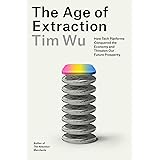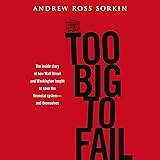Imagine you are a seasoned investor or a discerning jewelry artisan, meticulously planning your next acquisition or sale of precious metals. The market constantly fluctuates, making it imperative to track the precise value of your assets. The accompanying video offers a concise, visual snapshot of today’s silver price in the USA, breaking down key metrics for various forms of silver.
Staying informed about the dynamic silver price is crucial for anyone engaged in the precious metals sector. This article expands upon the critical information presented in the video, providing a deeper understanding of silver’s intrinsic value and market influences. We delve into the nuances of purity, measurement units, and the intricate factors shaping current valuations.
Deconstructing Silver Purity: From Sterling to Fine Silver
Understanding silver purity is fundamental when evaluating its market worth and application. The video references several key designations: .925, .999, and Britannia silver. Each number signifies a distinct level of fineness, directly impacting value and usability.
.925 silver, commonly known as sterling silver, contains 92.5% pure silver and 7.5% other metals, typically copper. This alloy provides increased durability and hardness, making sterling silver ideal for jewelry and silverware. While robust, its lower purity generally commands a slightly lesser price per unit weight compared to purer forms.
.999 silver represents fine silver, consisting of 99.9% pure silver. This higher fineness makes it extremely soft, rendering it less suitable for intricate jewelry that requires structural integrity. However, .999 silver is the standard for investment-grade bullion, such as coins and bars, and its price closely tracks the global spot silver market.
Britannia silver, specifically mentioned in the video’s title, holds a unique place with a fineness of .958, meaning 95.8% pure silver. This standard was introduced in Britain in 1697 to help prevent the melting down of sterling silver coinage. Today, Britannia silver is appreciated for its higher purity than sterling while still offering a degree of workability for special jewelry pieces or commemorative items.
Decoding Karat Designations for Precious Metals
The term ‘Karat’ (K) traditionally refers to the purity of gold, where 24K signifies pure gold. While the video title mentions “22 & 24K Britannia Jewelry,” it is important to clarify this terminology for silver. Silver purity is almost exclusively measured in millesimal fineness (e.g., .925, .999).
Occasionally, some regions or jewelers might informally use ‘K’ to describe the ‘carat’ weight of gemstones set in silver, or it could be a reference to a gold plating on silver. However, for the intrinsic purity of silver itself, the millesimal system is the globally accepted standard. Investors and buyers should always look for the millesimal fineness hallmark when assessing silver items.
Navigating Global Units of Silver Measurement
The global precious metals market utilizes various units of weight, each important for specific transactions and regions. The video highlights ‘Per Gram Tola Kg,’ illustrating this diversity. Understanding these units is essential for accurate price comparisons.
A **gram (g)** is the most universally recognized metric unit of weight, widely used across the globe for smaller quantities of silver. Retail jewelry transactions often quote prices per gram, offering precise valuation for individual items. This unit forms the bedrock for calculating the value of smaller silver pieces or daily consumption.
The **tola** is a traditional unit of weight predominantly used in South Asia, particularly in India, Pakistan, and the Middle East. One tola is equivalent to approximately 11.66 grams. For investors or buyers dealing with markets in these regions, understanding the silver price per tola is indispensable, as local jewelers and bullion dealers often quote prices in this unit.
A **kilogram (kg)** represents 1,000 grams and is a standard unit for larger bulk transactions of silver bullion. Professional investors, mints, and large-scale dealers commonly trade silver in kilogram bars. Tracking the price per kilogram is crucial for significant investment positions and industrial applications.
What Drives Today’s Silver Price in the USA?
The price of silver, like all commodities, is influenced by a complex interplay of supply and demand factors. While the video provides a snapshot, the underlying market dynamics are constantly shifting. Several macroeconomic and industry-specific elements contribute to daily fluctuations.
Firstly, industrial demand constitutes a significant portion of silver consumption. Silver possesses exceptional electrical and thermal conductivity, making it vital in electronics, solar panels, and medical devices. Technological advancements and shifts in manufacturing can directly impact this demand segment, creating upward or downward pressure on prices.
Secondly, investment demand plays a crucial role. Silver is often viewed as a safe-haven asset, similar to gold, during times of economic uncertainty or inflation. When investors seek to preserve capital, they often turn to physical silver bullion, exchange-traded funds (ETFs), or silver-backed derivatives. Geopolitical events and global economic forecasts heavily influence this investment appetite.
Furthermore, the strength of the US dollar (USD) significantly impacts the silver price. As silver is globally priced in USD, a stronger dollar makes silver more expensive for holders of other currencies, potentially dampening international demand. Conversely, a weaker dollar can make silver more attractive, driving prices higher.
Macroeconomic Indicators and Their Influence
Broader economic indicators, such as interest rates and inflation, also exert considerable influence on silver values. Higher interest rates typically increase the opportunity cost of holding non-yielding assets like silver, potentially leading to decreased investment demand. Conversely, periods of high inflation often boost silver’s appeal as a hedge against rising costs, prompting investors to seek its protective qualities.
Mining supply is another critical factor. Silver is primarily produced as a byproduct of mining other metals like copper, lead, and zinc. This means silver supply is less responsive to its own price movements compared to gold, which is mostly primary-mined. Disruptions in mining operations, labor disputes, or new discoveries can therefore have a notable impact on global silver availability.
Practical Considerations for Silver Buyers and Sellers
For anyone looking to buy or sell silver, understanding the current market price is merely the starting point. Several practical considerations can significantly affect the final transaction value. This knowledge empowers consumers and investors to make more informed decisions when navigating the silver market.
Always compare the listed spot price of silver with the actual price offered by dealers. The spot price is the current market price for immediate delivery of the raw commodity. However, dealers typically add a premium to this price, covering their operational costs, fabrication, and profit margins. This premium varies based on the product type, quantity, and dealer.
When purchasing silver jewelry, be aware that the price often includes manufacturing costs, design fees, and brand markup, far exceeding the intrinsic metal value. For investment purposes, pure bullion (bars or coins) generally offers the closest approximation to the spot silver price. This ensures maximum exposure to the underlying commodity value rather than additional charges.
Identify reputable dealers who offer transparent pricing and provide proper assay certificates for high-purity silver. Due diligence is paramount to avoid counterfeit products or unfair pricing. Online reviews, industry affiliations, and established track records are excellent indicators of a dealer’s reliability.
Understanding the dynamic nature of today’s silver price in the USA, alongside its purities, measurement standards, and market influences, is fundamental for shrewd decision-making in the precious metals arena.











